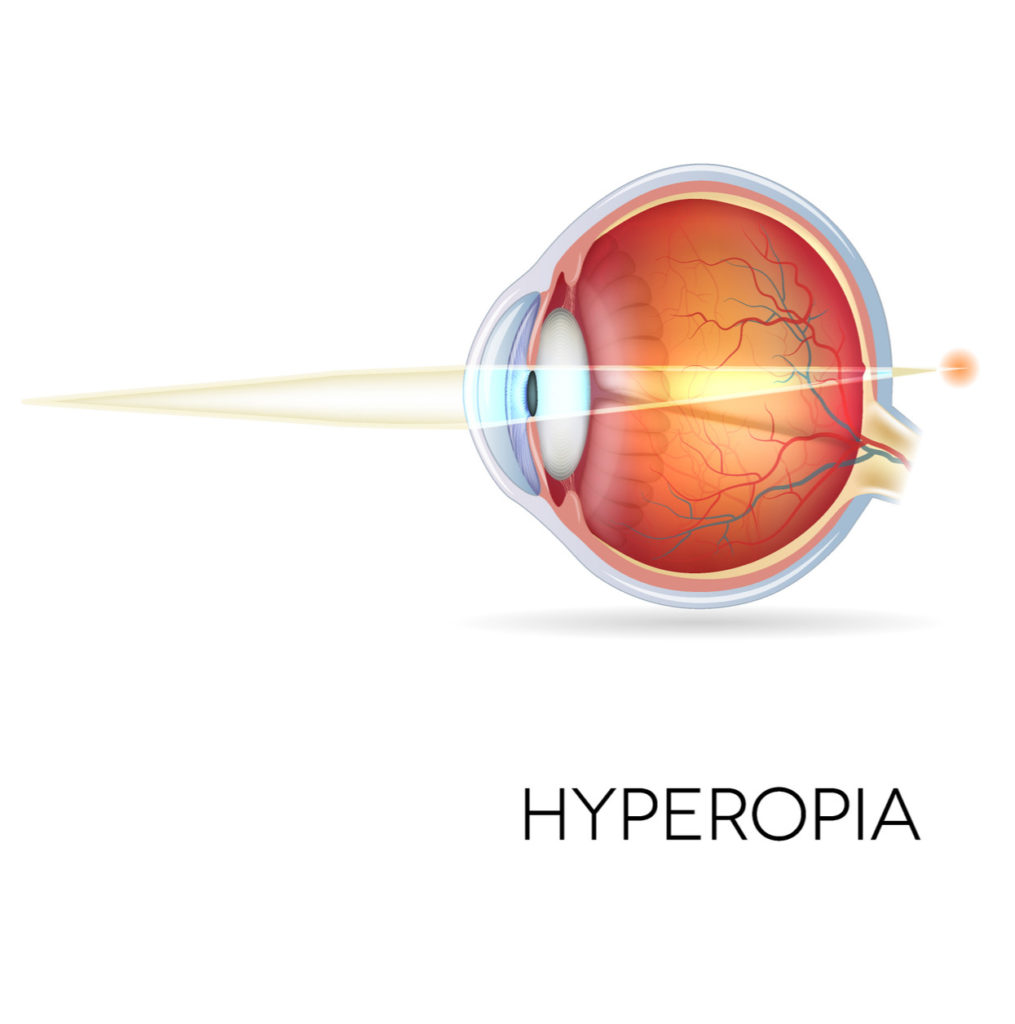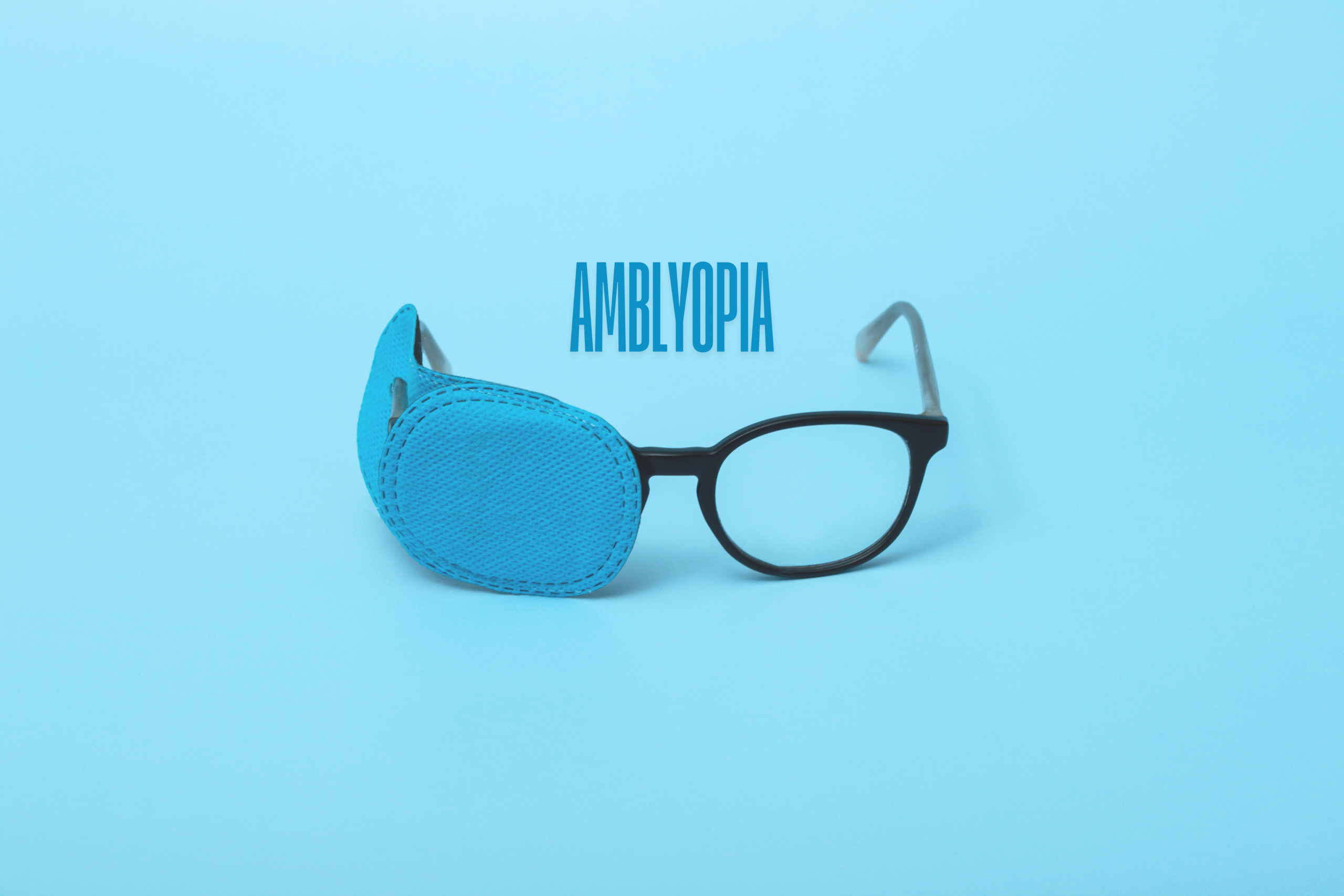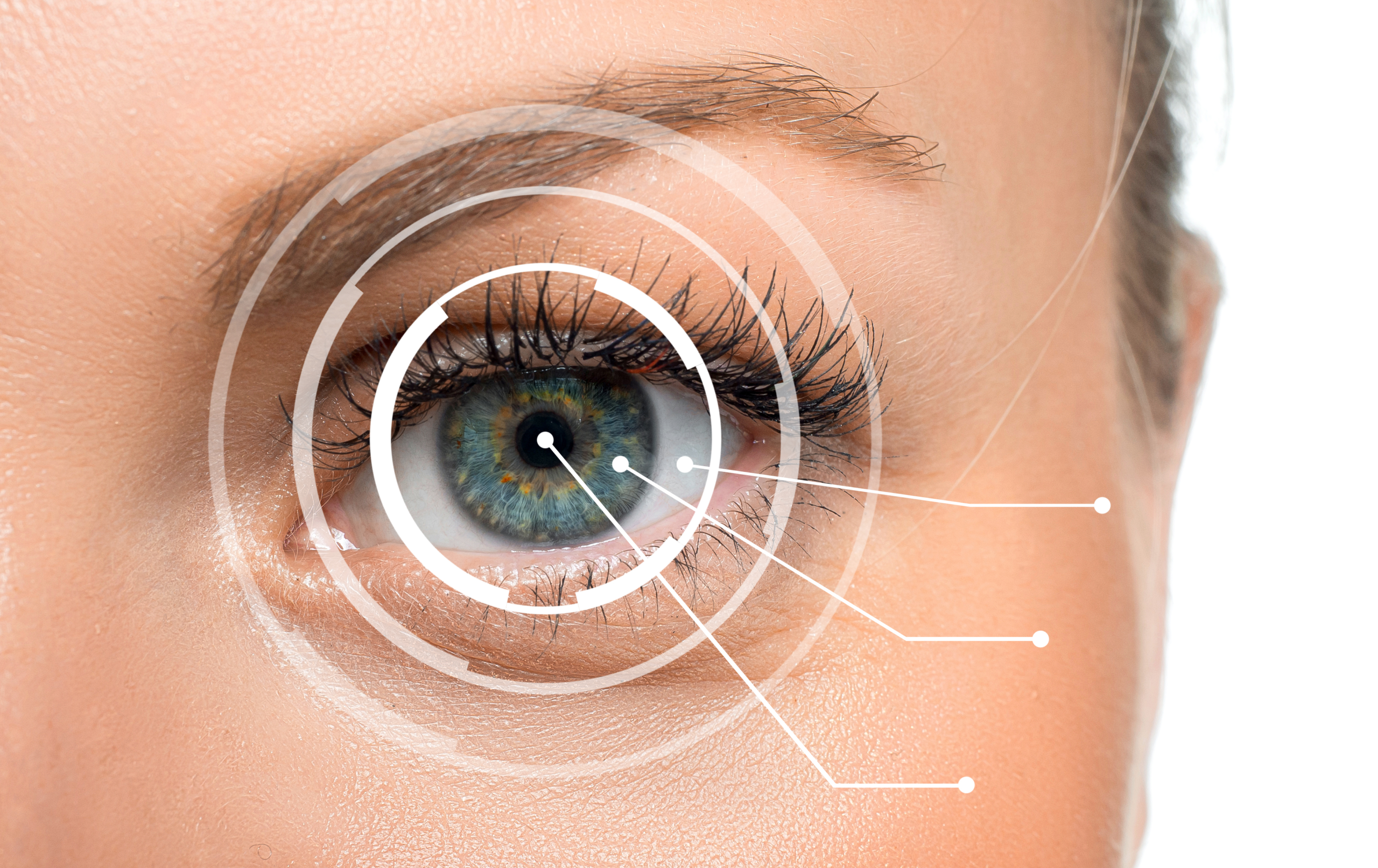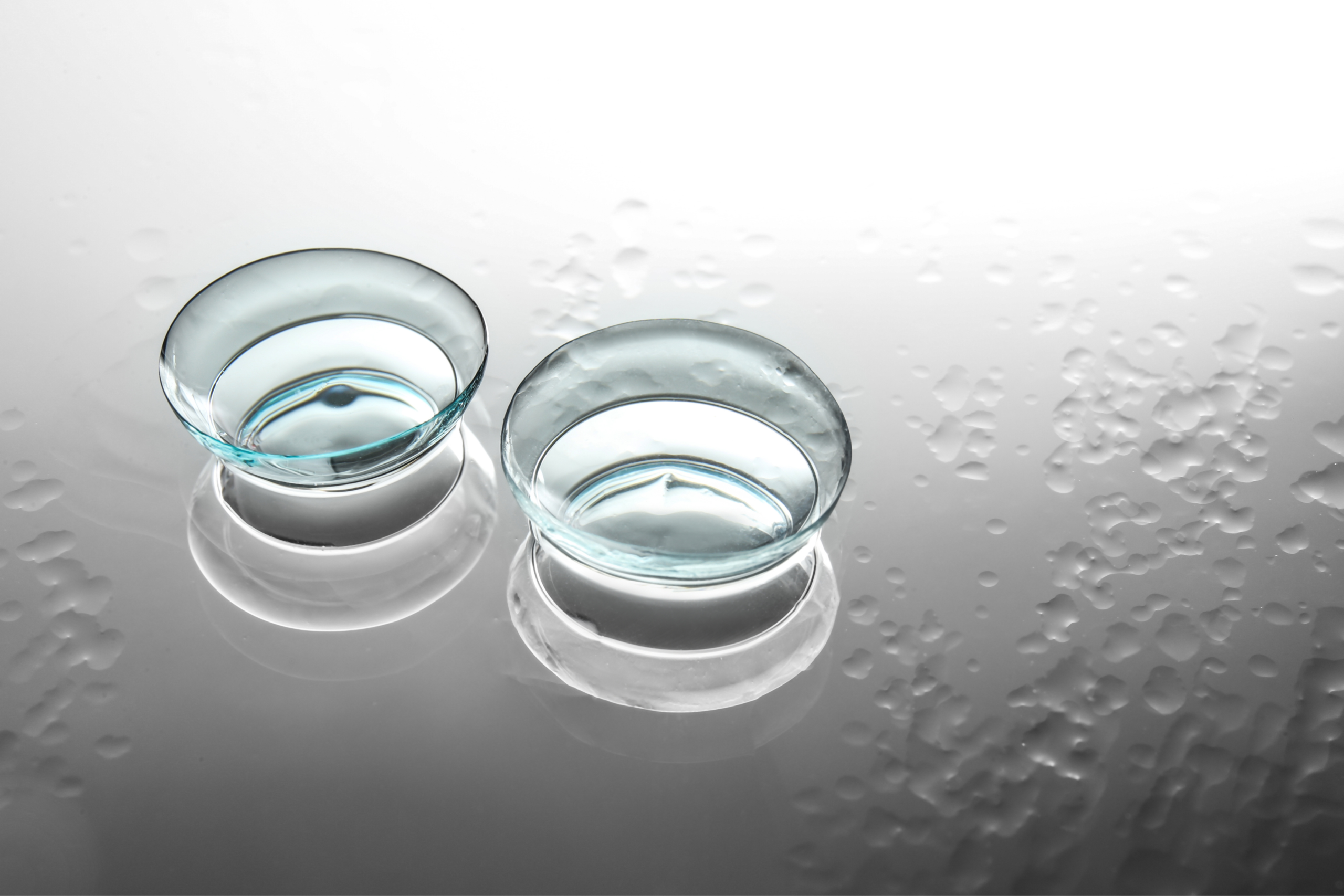
Many people live with refractive errors in their eyesight. You may be short-sighted, long-sighted, or have astigmatism – there are many errors that can occur as well as ways to address them. Shannon, our Optometrist, has answered some of the common questions we receive about these eyesight issues – what are they, how do they come to be and how can laser eye surgery correct them?
Astigmatism, Myopia and Hyperopia – what do they mean?
Astigmatism, myopia (short-sightedness), hyperopia (long-sightedness), and presbyopia are eyesight issues caused by a refractive error. They are very common and generally easy to correct!
Refractive error is what occurs when the eye is unable to accurately focus light onto the retina, resulting in blurred vision. The retina is a very thin layer of light-sensitive cells and nerves. When light falls on these retinal cells, they send an electric signal, via the nerves in the retina, to the part of the brain that processes vision – the visual cortex.
Refractive errors occur when the shape of the eye is not quite suitable for the power of the lens of the eye. This could be because the eyeball is too long or too short (axial length), or the cornea is too curved or too flat.
The crystalline lens is a transparent structure inside the eye. It focuses the light, which enters the eye, into a clear image, on the retina. If the lens is not strong enough, or if it is too strong for the length and shape of a person’s eye, the image formed on the retina will be blurred. Keep reading to find out more about these different layers/parts of the eye.
Understanding Parts of the Eye
How Does the Eye Work
Check out this diagram of the human eye anatomy:

Light passes from outside the eye, through the cornea, then through the lens, focusing on the retina which is almost the last layer of the eye. In this diagram, you can also see the optic nerve. The optic nerve carries millions of electrical impulses from the eye to the visual cortex in the brain.
Read on to learn more about some of the different parts of the eye and what they do to help us see. Or for even more detailed information on how the eye works, check out this video:
Lens (Crystalline lens) and the Ciliary Body
The lens is a transparent structure inside the eye. It focuses light that enters the eye, into a clear image on the retina. If the lens is not strong enough, or too strong, for the length and shape of a person’s eye, the image formed on the retina will be blurred.
There are small muscles that attach to the lens called the ciliary body. These small muscles constrict and relax and can make the lens change shape, which allows the eyes to focus on near or far objects – known as accommodation.
When the ciliary body relaxes, the lens flattens and thins, reducing the power of the eye and allowing it to focus on distant objects. When the ciliary body constricts, the lens becomes thicker, more curved and more powerful, allowing the eye to focus on objects that are closer to the eye.
With age, the lens stiffens, and even though the muscles (ciliary body) can still be activated, they can no longer alter the shape of the lens. So the eye loses its ability to change focus. That is when you will need spectacles, contact lenses, or refractive laser surgery, to make near objects come into focus.
With age, the lens gets less flexible but it also gets thicker. This increased thickening can also cause the lens to become cloudy, and harder to see through, this is called a cataract. Cataracts are a very common occurrence later in life.
Cornea
The cornea is another transparent layer of the eye. It’s the very front surface of the eye and it helps transmit and focus light into the eye. This is the only part of the eye that is directly altered by corrective laser eye surgery. During surgery the refractive laser reshapes the cornea, changing the focus.
Optic Nerve
The optic nerve is a bundle of more than a million nerves. These nerves carry visual messages from the retina to the brain. Damage to the optic nerve can cause a variety of visual problems. Glaucoma is one of the most common eye conditions related to optic nerve damage. Others include Multiple Sclerosis, Giant Cell Arteritis and Malnutrition. Visual loss due to damage to the optic nerve can not be corrected with spectacles, contact lenses or laser surgery.
Retina and Macula
The retina is a very thin layer of light-sensitive cells and nerves. When light falls on these retinal cells, they create an electrical impulse that is sent along the nerves in the eye, to the optic nerve and onto the visual cortex in the brain. Here the impulses from both eyes are processed and merged to create a complex 3-D image that we are able to perceive.
The macula is the area of the retina that is most light-sensitive, so it is responsible for all our detailed vision and is the area most adept at perceiving colour. When this region of the eye deteriorates, it can drastically alter our vision. Age-Related Macular Degeneration (ARMD) is a common condition that reduces vision but can not be corrected the way a refractive error can. See our article on ARMD here.
There are four types of refractive error
Myopia
Also known as near or short sightedness.
A person with myopia is unable to clearly see things that are far away. They can see things that are close up, at near or short distances. In myopia the lens causes the image to be focused in front of the retina.
Hyperopia
Also known as far or long sightedness or hypermetropia.

A person with hyperopia is unable to clearly see things that are close to them. They can usually see things that are far away, at long distances. Sometimes, when a person is very hyperopic, they can’t see clearly at any distance – long or short. In hyperopia the lens causes the image to be focused behind the retina.
Astigmatism
This is when the front surface of the eye (the cornea), or the lens is not evenly curved in all directions. This can cause blurred vision at any distance. Astigmatism can cause people to notice a distortion to the shape of objects or smearing of the edges of objects (almost like seeing a second copy of the image). The effects of astigmatism are most obvious when you’re in a dark environment looking at lights (like driving at night); the lights may appear streaky or with spokes/rays of light coming off them – a bit like the way a child might draw the sun.
Presbyopia
This is a gradual age-related loss of the eyes’ ability to focus on close-up objects. The ability to change focus to images at different distances is called accommodation. Presbyopia starts to become noticeable around the age of 40 to 50 years. It gradually worsens, stabilising around the age of 60-65 years.
People often notice the effects of presbyopia when trying to read small print, especially in a poorly lit area. Early on, you can counter the effects of presbyopia by holding your reading material further away and ensuring you have good lighting.
Uncorrected presbyopic eyes get tired easily and can cause fluctuations in vision, as the eyes struggle to compensate for the changes in the flexibility of the lens. This can end up with the eyes over or under-focusing. This flip-flop between different states of focus, called accommodative spasms, can cause nausea and headaches. These symptoms settle once the eyes adjust to their new visual status, or are corrected with spectacles, contact lenses or laser eye surgery.
Frequently asked questions about refractive errors
Can I have more than one refractive error?
Yes – it’s possible to have more than one refractive error. You could also have different refractive errors in each eye. No matter what your refractive error is, you will always develop presbyopia after the age of 40 years. Even people who have had no refractive error in their younger years will eventually develop presbyopia.
How often will my prescription change?
Our refractive error changes over time. To keep it fully corrected you may need to update your prescription (spectacles or contact lenses) at various periods. With refractive laser surgery we only operate on eyes that have stopped progressing. The exception to this rule is with the treatment of Presbyopia with laser correction.
Younger people with myopia tend to need their prescription updated every 6-24 months, which is why they’re generally not suitable for refractive surgery until their prescription has stabilised. Most myopic prescriptions stabilise around 20 years of age. After about 40-45 years of age myopic eyes start to develop presbyopia. This change in vision stabilises around 60-65 years.
Younger people with hyperopia tend to need to change their spectacle or contact lens prescription less often, and their eyesight usually improves up until their 30s. After 30 years of age a hyperopic eye will start to decline, stabilising around 60-65 years.
People who have never had any refractive error until their 40s, will develop Presbyopia and will notice their prescription changing every 12-36 months during the ages of 40 to 65 years.
Everyone’s eyes change at different rates, but by studying large populations, some patterns of change have been identified. Those patterns can help predict how quickly or slowly your prescription might change. In treating presbyopic patients or pre-presbyopic patients we take these predicted changes into account, but we can’t guarantee you will be without spectacles forever! Unfortunately, we can’t stop the ageing process – but rest assured, if we could, we would!
I was told my myopia would be cancelled out by my presbyopia?
Not exactly. Many myopic (short-sighted) people notice a drop in the level of their myopia as they approach their 50s. This is related to the anatomical changes that occur in the presbyopic eye. As the lens becomes stiffer, the focusing system of the eye ‘relaxes’, and often the myopic prescription drops (and a hyperopic prescription will increase). Very rarely does it drop to the point that you will no longer need spectacles (or contact lenses) for distance vision.
The graph above shows myopia is fairly stable from 40-55 years of age, but then starts to drop off for men and women from the age of 55 years onward. The graph also shows that hypermetropia (or hyperopia) increases from 40 years of age onwards.
How do you correct refractive errors?
The first thing you need to do to correct any blurred vision or refractive error is to have a comprehensive eye examination with an Optometrist.
Optometrists are registered medical health professionals trained to test your vision and to look at the health of your eyes. The New Zealand Association of Optometrists recommends that everyone should have an eye examination every 2-3 years.
You may need more regular eye examinations if you:
- Have a family history of eye disease
- Are over 65 years of age
- Are under 15 years of age
- Wear contact lenses
- Have any medical conditions
- Are on any medications that might increase your risk of eye or vision problems.
Once your Optometrist has carried out an eye test they will discuss with you any refractive errors and the options for treating them. The first option offered, and the most common option is spectacles or glasses. But there may be other alternatives for you, so don’t be afraid to ask about contact lenses or refractive laser eye surgery.
Spectacles or glasses
Spectacles correct the refractive error by countering the power imbalance, using corrective lenses. These corrective lenses sit in a spectacle frame in front of the eye.
Contact lenses
These correct the refractive error in the same way, but the lenses rest on the outer surface of the eye, the cornea. Contact lenses are medical devices that require accurate fitting and trialling to ensure they are safe and appropriate for each individual. For this reason, you’ll require more visits to your Optometrist to have them fitted.
Laser eye surgery
Refractive Laser Eye Surgery corrects the refractive error by reshaping the cornea. Altering the curve and thickness of the cornea to better match the power of the eye. Refractive Laser Eye Surgery is a medical procedure carried out by an Ophthalmologist. Here at Wellington Eye Centre our surgeon, Dr Andrew Logan, performs three different types of laser refractive surgery; SMILE ® , LASIK and PRK.
- SMILE is currently only able to correct Myopia and Astigmatism
- LASIK can correct Hyperopia, Myopia and Astigmatism.
And a special type of LASIK, called Presbyond can allow people with Presbyopia to have their vision corrected, allowing most people to be spectacle free for most near and distance tasks. - PRK can also correct Hyperopia, Myopia and Astigmatism.
Laser Eye Surgery can correct refractive errors within the range of -10 to +4 diopters and astigmatism.
Here is a graphical representation of the three types of laser eye surgery available today.
If you’d like to find out if you’re suitable for refractive laser eye surgery, book a free laser suitability assessment with us.
Further information comparing the different laser eye surgery procedures can be found on the website of our laser manufacturer, Carl Zeiss Meditech.
Benefits of laser eye surgery over spectacles or contact lenses
There are many benefits of laser eye surgery!
No more raindrops or steaming up of your spectacles. Goodbye fear that if your spectacles break you’d be unable to drive or work till they were fixed or replaced.
No more waking up in the middle of the night and not being able to see to get to the bathroom, to let the cat out, to check on the kids or to investigate that odd noise that woke you.
No more last minute panics to re-order contact lenses when you realise you’re on your last pair. Or the hassle of all the bits and pieces you need to take with you on work trips and holidays – a backup pair of contact lenses, solutions, contact lens case, a copy of your prescription and a backup pair of spectacles!
If you’ve ever wondered whether laser eye surgery could be a solution for your short-sight, long-sight, astigmatism or presbyopia, book a free laser suitability assessment with us. Here is a little article, which tells you what you can expect at your laser assessment. Or, get in touch any way that suits – you can call us on 0800 733 327, email us at info@wefixeyes.co.nz or complete the online booking form. We would love to hear from you!
SMILE ® is a registered trademark of Carl Zeiss Meditec.

Amblyopia and Laser Eye Surgery

What are the visual requirements to join the Police in NZ?

What Can Go Wrong During Your Laser Eye Surgery?

What are the visual requirements for flying, set by the Civil Aviation Authority?

What happens when your vision after laser vision correction surgery is not what you expected?

Common Medications Used in Laser Eye Surgery

Amblyopia and Laser Eye Surgery

Meet The Team at the Wellington Eye Centre

How Much Does Laser Eye Surgery Cost in 2025?

